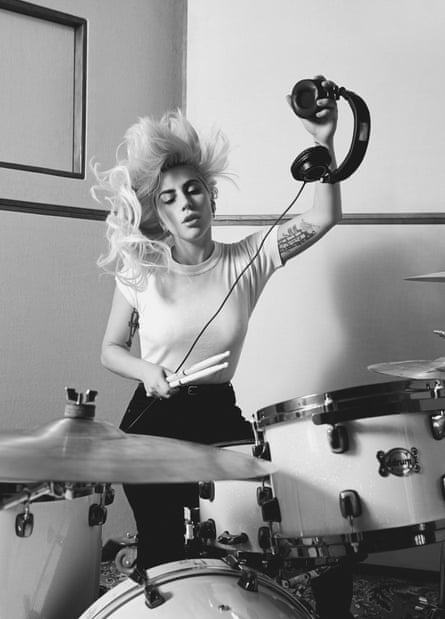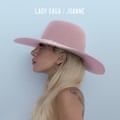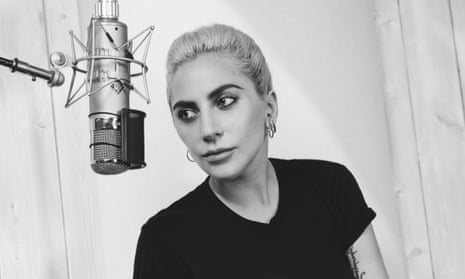Ten years and four studio albums into her career, this is where Mother Monster sheds the trimmings. Joanne – named after the singer-songwriter’s late aunt, but also her own middle name – is Lady Gaga’s way of drawing a line, at least for now, under the perception of her as the girl with the lobster on her head.
Having taken her self-focused art project to the far end of the conceptualist spectrum on the 2013 album Artpop, the singer was left with diminishing sales and the awareness that her music had been eclipsed by an image that was spiralling into parody. Her ardent support for LGBT rights had been dismissed by some in the community as an attempt to be an unelected white knight on their behalf. Her dips into surrealism, such as the so-called flying dress (actually an “electric-powered hover-vehicle”) were starting to look like sub-Björkian stunts. Worse, her primary musical themes – marginalisation, identity, the right to be a weirdo – were tired, and Artpop’s singles failed to become the hallmark songs of their year, unlike the brilliant Bad Romance and Paparazzi, which defined 2009.

Joanne is Gaga with the look-at-me layer peeled away. For the first time, she’s made an album using not much more than the resources that predate her stardom: the big, clear voice and life-as-she-sees-it honesty. The razzle-dazzle in her hasn’t entirely dissipated – more of which below – but it takes second place to her desire to be seen as just Stefani Germanotta for a while.
She was impelled by the tragedy of her aunt’s death from lupus at the age of 19, a decade before Gaga was born. Gaga’s father, Joe – Joanne’s brother – still cries about it. “If I could just heal my dad, then maybe I might heal someone else,” she said recently. The delicate acoustic title track was written for him; her voice is tremulous as she sings: “I can love you even if I can’t see you any more.”
To ground herself, Gaga has turned to a sound triangulated by rootsy country, blues and soul. She’s not the first American singer to go Americana when they needed a break from the music that made them famous – Madonna did it in 2000 with the Music album, and Chrissie Hynde with her Nashville-centric new Pretenders record – but Gaga is the only one who’s approached it with a fistful of diva. Promoting the album with a round of US club gigs titled the Dive Bar tour, she dressed in full country-star regalia, which was as much a costume as the deathless meat dress. And, on the record, she needs no prodding to let loose with the look-at-me might of her larynx. As proved by her 2014 duets album with Tony Bennett, Cheek to Cheek, she can outsing almost anyone, and this album overflows with examples of Gaga at full pelt.

For each wistful Diamond Heart, seemingly addressed to a rapist (“Some asshole broke me in / Wrecked all my innocence”), there’s a Come to Mama – a belting soul/blues workout that rivals Mariah Carey at her most rhinestoned, though the inclusive lyric (“Everybody’s gotta love each other / Stop throwing stones at your sisters and your brothers”) is typically Germanotta. The Bennie and the Jets-inspired duet Hey Girl pits her against Florence Welch, a clash of vocal cords won by Gaga. As an example of powerful women urging other women to have each other’s backs, it’s no Sisters Are Doin’ it for Themselves, but it makes its clattering point.
Welch is one of a number of bankable indie-rock guests. Josh Homme is the guitarist and drummer on John Wayne, an alt-rodeo confection that has Gaga satirically averring her partiality for “real” men: “I crave a real wild man/ I’m strung out on John Wayne!” Beck co-wrote Dancin’; in Circles, a country-reggae nod to self-pleasure - “Up all night when I rub the pain out,” Lady G croons, sounding not unlike a safe-for-work Peaches – and, surprisingly, Tame Impala’s Kevin Parker co-produced the first single, Perfect Illusion, the should’ve-been-bigger banger that most closely cleaves to the frenetic, club-ready Gaga sound. Mark Ronson, the album’s main producer, has added an overall retro-gloss that suits Gaga.
It’s a brave move, making a record that’s mostly about the interior rather than the exterior. Gaga’s huge voice adds a self-protective veneer, as does the presence of the other musicians, but at least she’s done the groundwork for future albums that might show her with true transparency.
Joanne stumbles a bit, and will be received with bafflement by everyone other than hardcore Little Monsters, but you can’t help admiring her boldness.

Comments (…)
Sign in or create your Guardian account to join the discussion